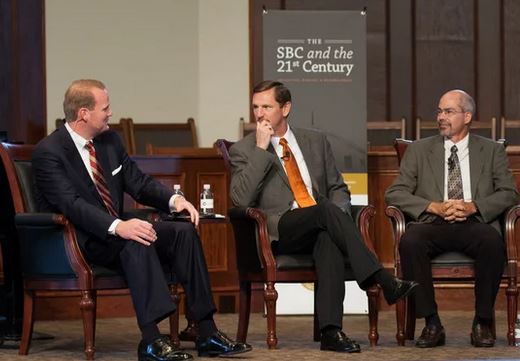 In September, I was invited to participate in a panel discussion on the future of state conventions hosted by Midwestern Baptist Theological Seminary during a symposium on the past, present, and future of the Southern Baptist Convention. Any responsible discussion about the future must begin with an acknowledgement and right understanding of our past, for the future of denominational work is inextricably tied to the past. What is the history of the state convention as a denominational structure?
In September, I was invited to participate in a panel discussion on the future of state conventions hosted by Midwestern Baptist Theological Seminary during a symposium on the past, present, and future of the Southern Baptist Convention. Any responsible discussion about the future must begin with an acknowledgement and right understanding of our past, for the future of denominational work is inextricably tied to the past. What is the history of the state convention as a denominational structure?
Interestingly, the history of the Southern Baptist Convention is inseparable not only from the history of state conventions but, specifically, the history of the Kentucky Baptist Convention. Kentucky Baptists created our state convention in 1837, some eight years before the Southern Baptist Convention was formed in 1845.
Of course, Kentucky was home to Baptist work long before the KBC was organized. The first evangelical church organized west of the Alleghenies was Severns Valley in Elizabethtown, founded June 18, 1781. The first association started west of the Alleghenies is Elkhorn, now known as the Central Kentucky Network of Baptists, organized Sept. 30, 1785. Kevin Ezell, a Kentucky native who now presides over the North American Mission Board, would be pleased to know – if he doesn’t already – that the idea for the plan of the American Baptist Home Mission Society was developed in Kentucky by John Mason Peck and Jonathan Going at Shelbyville in September 1831.
The idea of the Cooperative Program also originated in Kentucky. On Nov. 16, 1915, the General Association of Baptists in Kentucky met in Jellico, Tenn., at my home church about 100 yards from the Kentucky state line, and adopted a budget plan for the support of all denominational work in the state and across the country. This was a decade before the Southern Baptist Convention, meeting at Memphis in 1925, adopted the Cooperative Program. The Kentucky plan was fashioned after that of First Baptist Church of Murray beginning around 1900.
The Southern Baptist Convention of churches owes its existence and its primary funding mechanism to the state conventions of churches that preceded her. Kentucky Baptists enjoy a rich history very much intertwined with the history of the SBC, but they also enjoy a work still thriving today. In fact, the 2,400 churches of the Kentucky Baptist Convention are planting more churches today than at any time on record. They are currently in a growth trend in baptisms, overall church membership, and in missions giving through the Cooperative Program and through each of the major missions offerings, including the Lottie Moon Christmas Offering for International Missions, the Annie Armstrong Easter Offering for North American Missions, and the Eliza Broadus Offering for State Missions.
We have a rich history. And we undertake our work today and in the future standing on the shoulders of those who have gone before us.
There is more to come on this topic.

